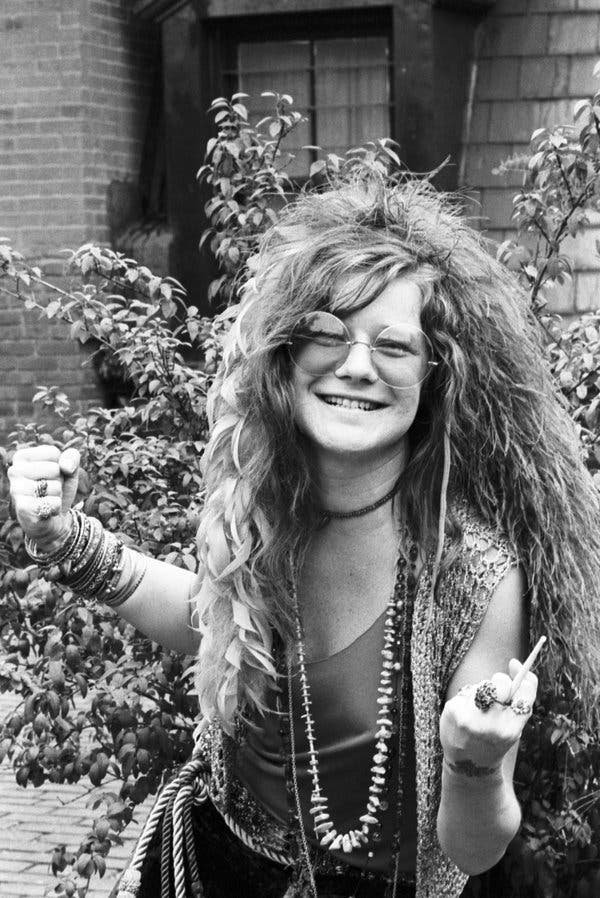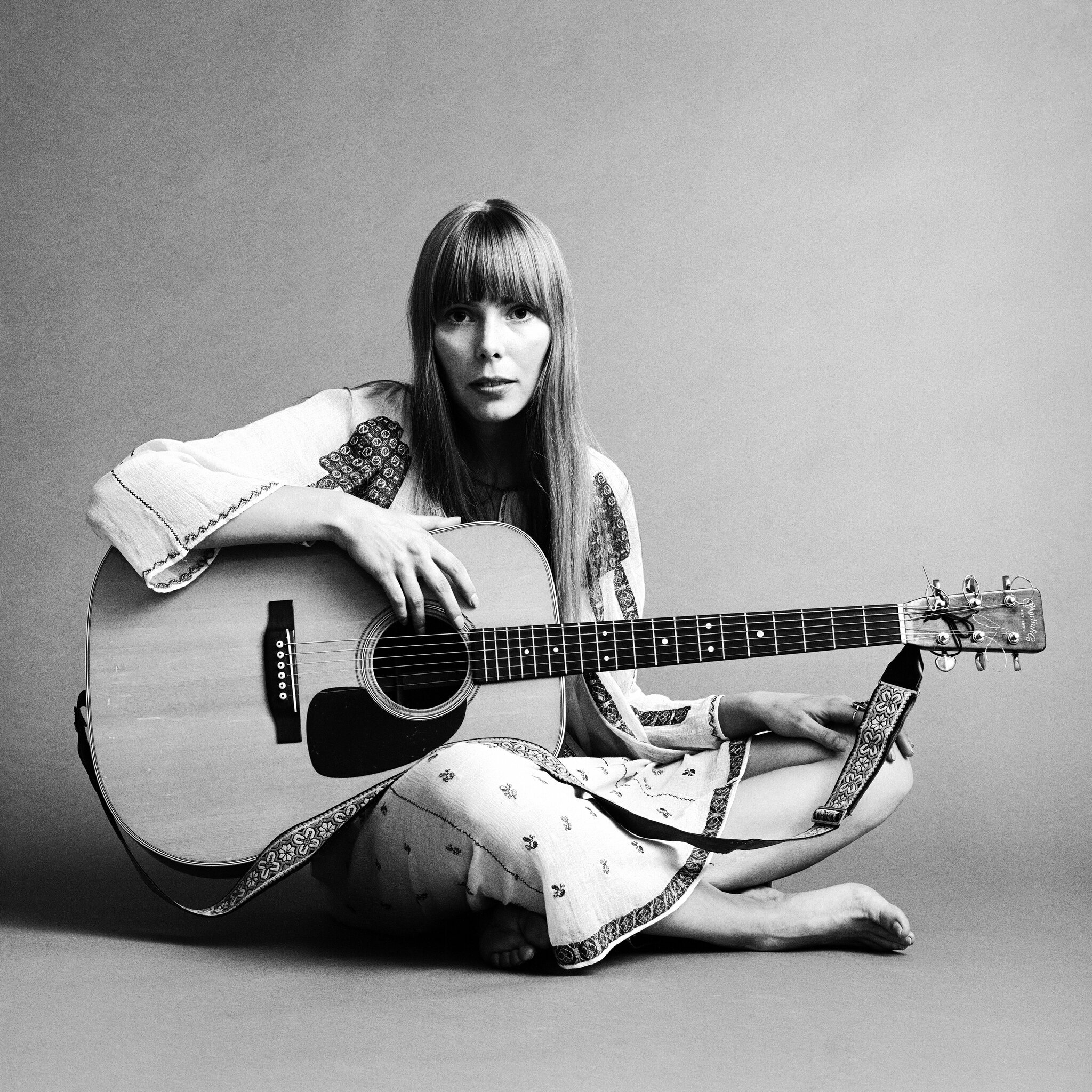The Backbones to Women in Rock
With March being Women’s History Month, I certainly couldn’t let the month go by without acknowledging some of the most influential women in music. Last March, I wrote a piece on the significance of blues in women’s music history which touched on the fact that the majority of women in music we love today can all be traced back to the women in blues from the early 1920’s and 1930’s. You can read that post here. However, this year, I wanted to take the general idea of that piece and hone in a bit more on my favorite genre, rock and roll.
While I still stand by the fact that even the women in rock and roll were influenced by the women from the early days of blues, I really wanted to try to give credit where credit is due by digging deeper into the key players behind women in rock and roll, aka, the backbones of women in rock. That being said, let’s get into it!
Sister Rosetta Tharpe
The first women on my list is Sister Rosetta Tharpe. There is no way I could put together a post like this without mentioning the “Godmother of Rock and Roll”. Sister Rosetta Tharpe got her start and recognition through her gospel music in the 1930s and 1940s. However, her take on adding in the electric guitar to her gospel songs opened up a sound that was appealing to the sounds of blues, R&B, soul, and of course, rock and roll. Her use of heavy distortion on her electric guitar was one of the pioneering sounds for much of what we know of rock and roll today. She also took a big chance with crossing over into the secular world with her music, which caused her to receive quite a bit of hate from the heavy churchgoers, but it certainly was worth it. Although she went mainstream, she still stuck to her gospel roots and opened up that door to the gospel-pop crossover. She was inducted into the Rock and Roll Hall of Fame in 2018 and sighted as an early influence to rock and roll. Referring to her as an early influence on rock and roll is surely an understatement due to the fact that she has been credited as an influence to musicians like Chuck Berry, Elvis Presley, Little Richard, and Eric Clapton. And while her name may not be as recognizable as some of the others on this list, her mark on rock and roll is something that rock and roll fans everywhere hear daily.
Carol Kaye
The next woman on this list is another player in the history of rock and roll that doesn’t seem to be as recognizable as some of the others on this list, Carol Kaye. Carol Kaye is considered to be one of the most influential bass players in the history of rock and roll. Originally a guitar player, Carol came about playing bass after playing guitar for the big band circuit in Los Angeles in the 1950s, even working for producers such as Phil Spector. One day after a bassist failed to show up, Carol quickly picked up a bass and filled that role, ultimately making history. She eventually became one of the most in demand bassist for session work and eventually became part of a group called The Wrecking Crew, which were essentially a group of session musicians that played throughout Los Angeles for thousands of studio recordings. Carol also became an author and wrote a series of books titled “How to Play the Electric Bass.” Although she slowed down her career towards the end of the 1970s, her legacy has continued to be prominent to this day. Paul McCartney even sighted her as inspiration for the sound of the bass in Sgt. Pepper’s Lonely Hearts Club Band. In the Amazon series, The Marvelous Mrs. Maisel, season 3 features a character by the name of Carol Keen which is said to be based off of Carol Kaye, however, Carol Kaye has since said that character and her story are nothing like her at all.
Janis Joplin
Next on this list is no other than my own personal rock and roll queen, Janis Joplin. I credit Janis Joplin for being the first artist that really opened the doors for my obsession with all things classic rock because once I discovered her, my obsession with music completely blossomed. Janis and her music could be considered the epitome of the Summer of Love due to her playing at festivals such as Woodstock and The Monterey Pop Festival, where her recognition really took off, and residing on Haight-Ashbury in San Francisco in the late 1960s. It would be a fair statement to consider Janis to be the Queen of Psychedelic Rock with her electric stage presence, raspy mezzo-soprano vocals, and her flamboyant style from her hair to the tattoos on her body. Although her career was cut short due to her untimely entry into the 27 Club, her music has made such a mark on rock and roll, and music in general, that it’s nearly impossible for her work to be forgotten. Her music and performances opened up the idea that women in music can be rough, imperfect, emotional, and passionate with an edge. Artists such as Stevie Nicks, Florence and the Machine, Pink, and many others has mentioned Janis as a major influence to their work.
Joni Mitchell
Where Janis Joplin acts as one of the backbones of psychedelic rock for women, Joni Mitchell acts as the backbone to women in folk rock. Joni Mitchell is a Canadian-American singer songwriter, and considered one of the greatest song writers of all time. Joni uses various techniques in playing guitar and has written songs in a variety of tunings to create different sounds. Much of her music touches on topics such as social ideals, romance, and womanhood and her lyricism is one of the things that sets her sound apart from the rest. Joni was a Laurel Canyon resident during the 1960s and 1970s where Laurel Canyon became THE place for rock musicians to reside. Other artists such as Jim Morrison, Cass Elliot, and Frank Zappa were also residents during this historical time. Joni even put out an album titled Ladies of the Canyon, inspired by her time there. Joni’s extensive career of blending the sounds of folk, jazz, and pop has truly left its mark on rock music. She completely set the standard for folk music and delicate lyricism which has lead to her being a major inspiration to many artists such as Taylor Swift, Prince, Harry Styles, and Madonna. Because of the impression she has made, it’s practically impossible to think of folk rock and not think of Joni Mitchell.
Joan Jett
The last lady on my list is none other than the punk rock queen, Joan Jett. Joan Jett is mainly known for her early band The Runaways and for her band Joan Jett & the Blackhearts. Joan Jett’s musical style is considered more punk rock or hard rock giving an edgier sound to rock and roll that paved the path for women that really want to rock out. Joan’s style and hardcore attitude helped bridge the gap between men and women rock stars and broke boundaries to level the playing field alongside men in rock. Joan’s music helped elevate punk rock to be a more mainstream sound. Not only did Joan show women that they can really rock out, she also was a major player in the punk rock style that is still seen throughout alternative styles today. Joan’s influence on rock, and punk rock, can be seen through artists like Green Day, Social Distortion, and Miley Cyrus. The attitude, edge, and talent that Joan brought to rock will continue to be prevalent to women that just want to rock out.
Of course there are many more women in rock and roll that have made their mark on the genre and music as a whole, however, I consider these five women to be the backbones due to the boundaries they broke, techniques they shared, standards they set, and style they influenced. Sister Rosetta Tharpe’s addition of the electric guitar to gospel music completely changed the course of the future sounds of rock. Carol Kaye’s skill on the bass set a standard for the sound a rock and roll band has to have. Janis Joplin’s raspy voice and reckless sound opened up the doors for passion in blues to transform over to a rock and roll stage. Joni Mitchell’s guitar and lyrics combo became the blueprint for women in folk rock. And Joan Jett’s punk rock sound created a space for women with an edge to rock on the same level as the men.
All of these women have completely changed rock and roll for the better and I am forever grateful for their work. Happy Women’s History Month ladies!





